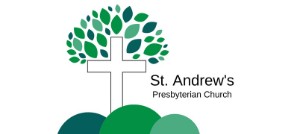The Human Side of the Resurrection
Easter
Our Lenten study focused on the book and movie, Chocolat, the story of a French village controlled by traditions that repress carnal nature and emphasize penance for our human failings. The mayor controls the townspeople including the new priest, Pere Henri. The mayor is “helpful” enough to edit the Priest’s sermons in a way that reinforces community standards. Through a series of events that challenge the expected norms, Pere Henri finds the freedom on Easter Sunday to preach his own sermon, from his heart. He begins, “I’m not sure what the theme of my homily ought to be…I don’t want to talk about Our Lord’s divinity. I’d rather talk about His humanity. I mean, you know, how He lived His life, here on Earth.”
Today, I want to draw out the human stories of the resurrection. Rarely does it seem that we hear the human condition found in the Easter stories. “He is not here, He is risen” may indeed have been what the first Easter participants experienced but what they saw and felt were raw human emotions that help us see ourselves more clearly.
Sometimes life’s cruel hand doesn’t give us a choice. That is the story of Mary Magdalene and Mary the mother of James, and Salome.
What is powerful for me about this story is that I have heard and looked into the faces of people who are facing the challenges of life’s cruel hands. I’ve looked into the faces of those in the twilight of their lives remembering their hardships but also remembering the faithful community that has surrounded them. I’ve looked into the faces of people who have lost their life partner and are selling their forever homes and face long-term care options. I’ve sat across from those who face the demands of work and family that consume our energy and keep us awake at night. We too easily forget the human dimension of our own struggles on Easter and the fact that Easter has something to say to us for this morning, the morning after this, and the morning after that.
Jesus’ divinity can be emphasized in words like “He is risen.” Jesus’ life can also be humanized in the stories of the women who went from the tomb and were terrified and didn’t tell a soul. So how can we balance the miracle and majesty of this day with the understanding that this day is about knowing God sees us and God understands our humanity?
In Mark’s Gospel, Mary Magdalene, Mary the mother of James, and Salome went to the tomb bringing spices expecting to anoint the body of Jesus. They were concerned about moving the stone, only to find it had been removed and the tomb was empty. They entered the tomb and found a man dressed in a white robe who met their alarm with reassurance that Jesus had been raised from the dead. The angel instructed, “But go, tell his disciples and Peter that he is going ahead of you to Galilee; there you will see him, just as he told you.”
This is good news for Peter who left the crucifixion with the sense that he had failed. He denied Jesus three times as Jesus had predicted. In calling Peter by name, Jesus is emphasizing “Peter, it’s okay, I forgive you, you are okay.” It is a pivotal moment in his faith that would reframe the rest of his life by that one declaration.
The story ends with the women fleeing “from the tomb, for terror and amazement had seized them and they said nothing to anyone and they were afraid.”
This is also a story about the human condition that helps us see ourselves more clearly. We aren’t shaming or doubting the woman for going home, we understand their reticence. We fear the challenges of our own lives. We fear that our past will catch up with us, and we fear what we hope will not happen.
In John’s version, Mary Magdalene went to the tomb by herself. She saw the stone rolled away and immediately went and told Peter and the other disciples. Peter and the other disciple, John, raced each other back to the tomb.
The disciples didn’t understand the scripture that Jesus was to rise from the dead. They had no sense of what was happening, they didn’t understand what had been told to them because the gravity of the moment overwhelmed them and they returned home. That’s something I can identify with, the gravity of these moments, not knowing and not being able to interpret what life is handing us.
Mary weeps and engages who she supposes to be the gardener, “Sir, if you have carried him away, tell me where you have laid him, and I will take him away.”
Then Jesus calls her, “Mary!”
That human connection is what helps Mary see Jesus for who he is and her response is to call him by his title, “Rabbouni,” which means Teacher.
Jesus said to her, “Do not hold on to me… go to my brothers and say this is what you need to do next. I am ascending to my Father and your Father, to my God and your God.”
Mary Magdalene found the disciples and reported, “I have seen the Lord.”
These are the human stories of Easter that we focus on today exhibit all the emotions, the sense of wonderment, and the sense of struggle that we experience. What is powerful for you about this story as you look into the faces of people you know who are facing the challenges of life’s cruel hands?
The communion we celebrate today is a human sacrament. This is a sacrament of body and blood. It is a sacrament of love in the crunch times, the worst moments in our humanness.

